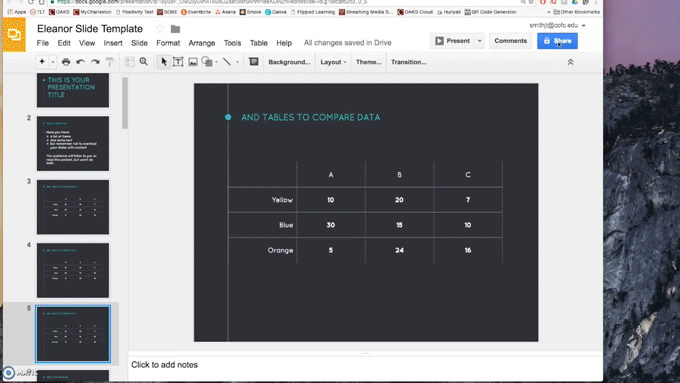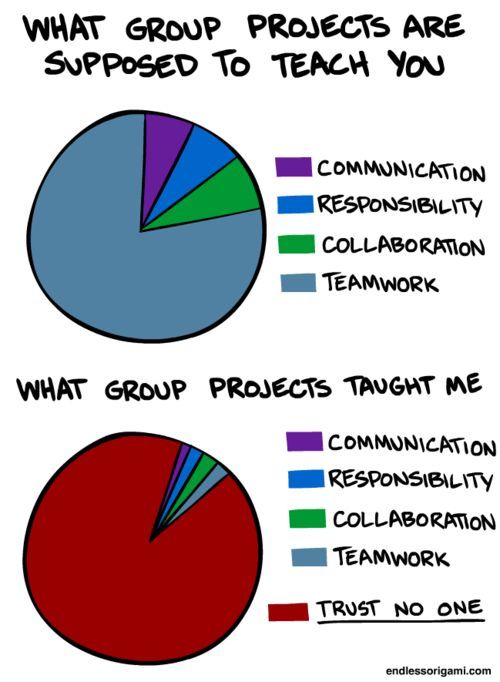Collaboration and project management are important skills for college students to learn. Unfortunately, many students grumble about group work and faculty spend too much time managing logistics. Wouldn’t it be nice if there were tools that could make in-class group work more efficient and productive?
I have a possible solution for you! Google Apps!
All CofC students and faculty have free access to Google Apps for Education using their College email address and password.
Here are two ways you can use Google Docs and Slides to make group work more efficient:
Share Templates
In-class group work is most effective if students are given clear instructions, including the goals of the activity and expectations for a deliverable. Without purpose or guidelines, students will be less productive and more easily distracted.
One way to provide structure is to create an outline, template, or worksheet to guide students’ work. If you create this handout in Google Docs, you can easily share it with students who can then type on the document as they work with their teams.
But, Jessica, wouldn’t that mean all students would be typing on the same document?
Yes, unless you make this tiny but powerful change to the document URL: delete the word “edit” from the end of the URL and replace it with the word “copy.”
When students click on the URL you’ve shared with them, they will be asked to make a clean copy. Now, each student or each group can work on their own document.
Ask your students to share their document with you so you can see what they’ve accomplished during class. And if groups run out of time and need to finish outside of class, every group member can contribute from their own dorm room or apartment (because Google Drive is cloud-based).
Share a Slide Master
After students complete an in-class activity or assignment, do you ask groups to present their work to the rest of the class? This form of debriefing or “reporting out” encourages students to work harder because they’ll have to stand in front of the room to present to their peers. It also gives students much-needed opportunities to practice their public speaking skills, which are typically quite weak.
But if you ask students to create slides in Powerpoint, every student would have to email their file or save it to a thumb drive and then open it on the teacher station computer. This requires too much precious class time.
Instead of using Powerpoint, create an empty slide show in Google Slides. If you want students to design their own slides, simply create a presentation with blank slides (one slide per student or one slide per group, for example). If you want students to include certain pieces of information on their slides, create a template. You can then duplicate that template slide for as many students or groups that you have.
Next, give your students editing rights and share the URL with them (watch the animated GIF below). Every student can now access that slide deck during class and work on their individual slides. When it’s time to present to the class, you only have to open the one Google Slides presentation and the entire class’ work is right there!
We hope you found this week’s Small Teaching Tip helpful. This post is part of a series which presents low risk, high reward teaching ideas, inspired by James Lang’s book Small Teaching: Everyday Lessons from the Science of Learning.






